Triumphs and trials: Farmer stories from the 2024 growing season
Farmers across various regions faced a challenging growing season made difficult by extreme weather conditions but, through innovation, were able to come out on top.
Read Time: 5 minutes
By Janelle Leach, Alayna Jacobs, Damon Oien, Lauden Wheeler
From the drought-stricken fields of central Kentucky to the saturated soils of the Central Plains, each farmer had a unique story of resilience and adaptation. This fall our conservation agronomists spoke to five farmers from different regions to discuss their struggles and innovative solutions during this past growing season.
Central Kentucky
Mark Roberts’ resiliency through a tough season
Mark Roberts, a second year Cargill RegenConnect® farmer in north-central Kentucky, experienced one of the toughest growing seasons yet from planting to harvest. Initially, he was on track for a great crop with all corn and soybeans planted on time. However, the weather turned against him.
By August 1, the drought set in, causing serious trouble. The drought made corn stalks brittle, and the next significant rains didn’t occur until late September with remnants of Hurricane Helene. Grain specialists in the area concluded that no amount of agronomic planning could have produced normal crop yields under these challenging growing conditions: “This year is not a reflection of farming skill—we cannot grow a good crop when water is so limited.” (Lee and Shamim, 2024).
High winds up to 60 miles/hour snapped the brittle corn stalks and caused significant lodging all over the farm. Strong winds also led to heavy pod shattering in full-season soybeans and widespread problems with stalk rot in corn (Bechman, 2024). Double crop soybeans were less mature and somewhat benefitted from the hurricane’s precipitation.
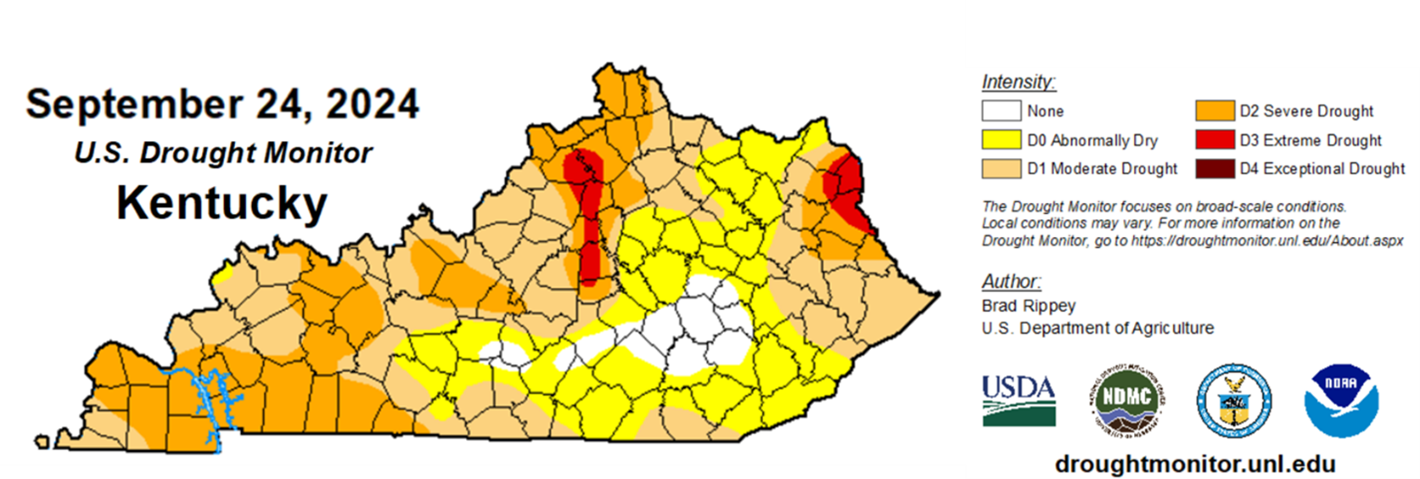
Figure 1. September drought conditions in Kentucky immediately prior to receiving precipitation from Hurricane Helene.
Despite the tough year, Mark remains optimistic. He highlights the strides in crop breeding, noting that the varieties he planted handled the tough conditions better than he expected. He also credits soil organic matter (SOM) for maintaining better soil moisture during the drought. Mark supports SOM levels with no-tillage and cover crops, preferring cereal rye and wheat for their ability to hold soil during winter and increase SOM by producing high plant biomass. Currently, he plants about 50% of his acres in fall cover crops but plans to expand. He is testing a three-way mix using annual ryegrass, crimson clover, and daikon radish on a small 35-acre plot. Mark also aims to drone-seed cover crops into all his soybean acres before leaf drop to ensure earlier planting and more biomass accumulation. He is using Cargill RegenConnect to help reach his goal of using fall cover crops on 100% of his farm in the future.
Mississippi Delta
Sledge Taylor’s irrigation success
Sledge Taylor, a first year Cargill RegenConnect farmer on the Mississippi side of the Delta near Como, Mississippi, grows cotton and corn on his farm. He found drought conditions less of an issue if irrigation was readily available for certain crops.
Sledge’s irrigated corn and cotton was planted on time and yielded well, with some of the best cotton yields he’s ever recorded. The dry conditions helped minimize crop pests and pathogens. He did lose roughly 500 acres of cotton to hail but successfully replanted. The dryland cotton, however, really suffered due to drought. Sledge attributes his crop resilience to cover crops and no-tillage practices, which he has invested in for nearly 40 years to limit excessive erosion. He credits no-tillage with reducing input costs and extending tractor life. He values winter cover crops for limiting bed disintegration in the winter and maintaining raised beds without spring tillage. His operation is about 30% irrigated, so he occasionally pulls a sweep through the furrows to clean out residue.
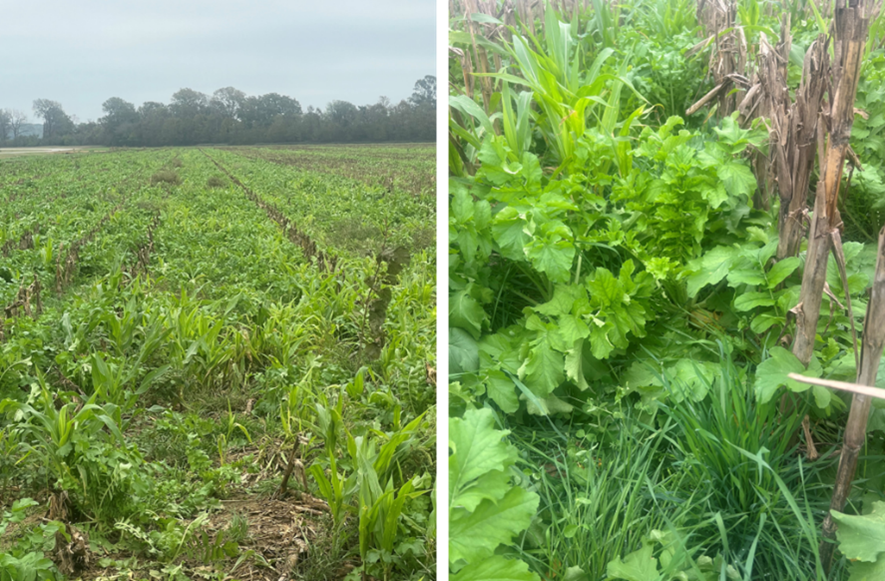
Figure 2. Fall 2024 cover crop species aerially seeded at Sledge Taylor's farm included diakon radish, Austrian winter pea, and cereal rye. Photo courtesy Sledge Taylor, Nov. 8, 2024.
Sledge experiments with cover crop mixtures to diversify carbon sources for soil microbes. He plants mixes of winter peas, daikon radish, and cereal rye, and is trying carinata and winter camelina as a substitute for diakon radish this year. He seeds cover crops aerially after chopping cotton stalks to minimize shading while leaving corn stalks standing. Sledge is passionate about using regenerative practices to improve water quality by reducing sediment erosion, adding, “One day I hope all water leaving the Delta will be clear. That’s money going down the drain.”
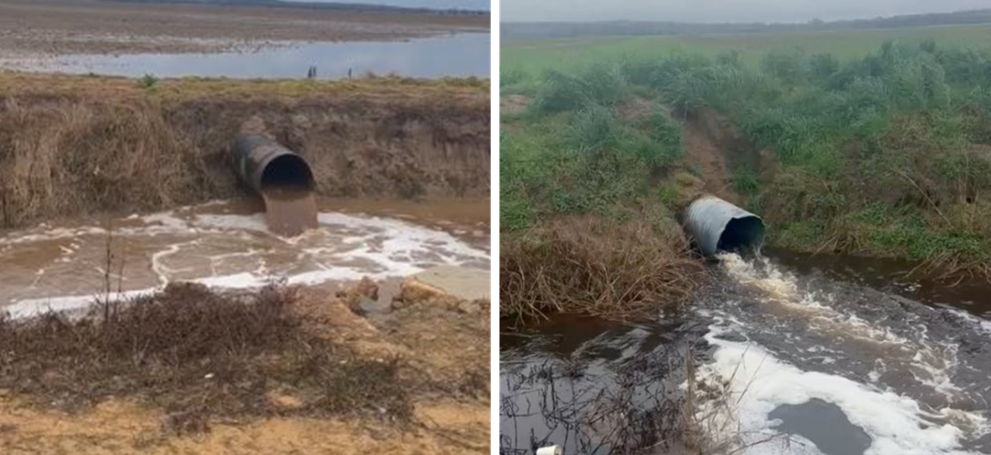
Figure 3. Winter runoff from a nearby neighbor's field with no cover crops full of sediment (left) and clearer water exiting a field with cover crops on Sledge Taylor's farm. Photo courtesy Sledge Taylor.
Central Midwest (Iowa)
Austin Siela’s yield triumph
Austin Siela, a Cargill RegenConnect farmer from Vinton, Iowa, had an excellent growing year with the best yields harvested on some of the earliest planted ground. After a severe drought in 2023, heavy rains brought new challenges to Iowa with saturated soils and a late, lighter drought. Despite these challenges, overall yields in the central corn belt were very good.
Austin's farm, operated alongside his father and brother, has been transitioning away from traditional tillage practices and using cover crops for soil health and to feed their cattle. They’ve noticed benefits like lower fuel consumption, better weed control, and more versatile crop rotation. Leaving the ground untouched has also kept more residue on the field.
During the wet spring of 2024, Austin saw his strip-tilled corn handle the conditions well and a yield advantage of about three bushels on no-tilled soybeans compared to tilled ground. There were challenges with fields requiring chemical termination of cover crops. Rapid growth made the timing of spraying difficult, but they managed to complete early spring chem passes within a good window. Terminated rye created a good weed barrier on the soil surface.
Looking ahead, Austin plans to continue using cover crops to support his cattle operation and land longevity.
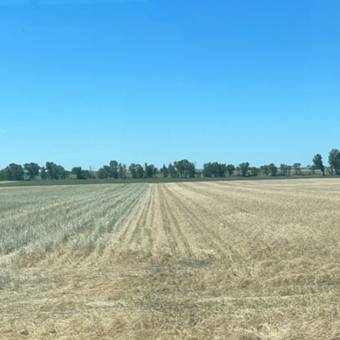
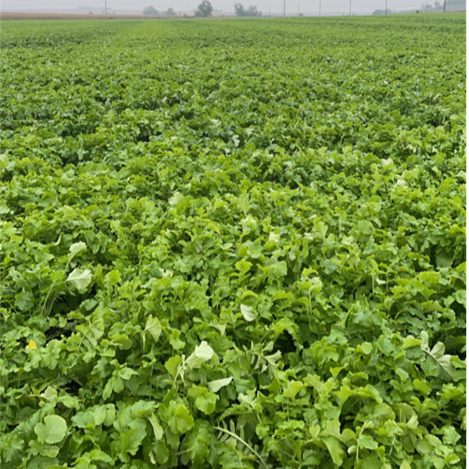
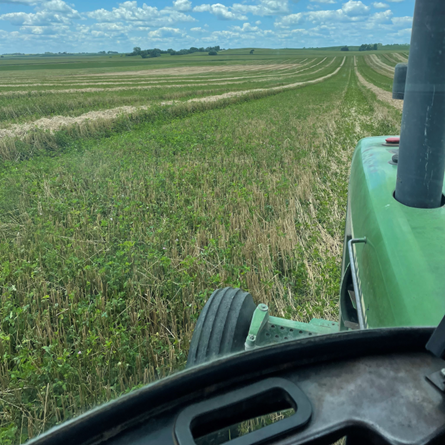
Figure 4. Image 1: Soybeans planted into a field of harvested rye. Image 2: Daikon radishes growing near Vinton, IA. Image 3: Cereal rye cover crop being baled for straw, with clover coming up (which will be harvested for baled forage at a later date). Photos courtesy Austin Siela.
Indiana
Dustin Karstensen’s tillage transition
Dustin Karstensen, a first-year Cargill RegenConnect farmer in northwest Indiana and northeastern Illinois, experienced a crop year dominated by a wet spring and a very dry fall. Corn yields were good, but soybean yields suffered from dry summer conditions. There were limited pest and disease problems, with one strong wind event causing lodging in some corn acres.
Dustin purchased new strip tillage equipment this year and used it for the first time after years of conventional tillage involving high speed discs and field finishers. Extremely dry soil after harvest made strip tilling difficult. He remembers well how he and others in his area had so many bolts shear on tillage implements that local stores and suppliers would run out of them.
After seeing a friend's success with strip-tillage, Dustin decided to make the change. He noticed that their corn and soybean yields were similar, but he was spending much more on fuel, labor, and equipment wear and tear. Reducing tillage improved his farm’s bottom lines Dustin shared that he was able to complete fall strip tillage with one tractor and one person, cutting his required labor in half. Dustin looks forward to further regenerative practices to save on inputs. He credits the Cargill RegenConnect program for incentivizing him to reduce tillage. Dustin hopes to move towards no-tillage systems to save on input costs and increase crop yields in the future. He looks forward to planting directly into the seedbed strips in the spring, accruing input savings since no spring soil finishing will be required.
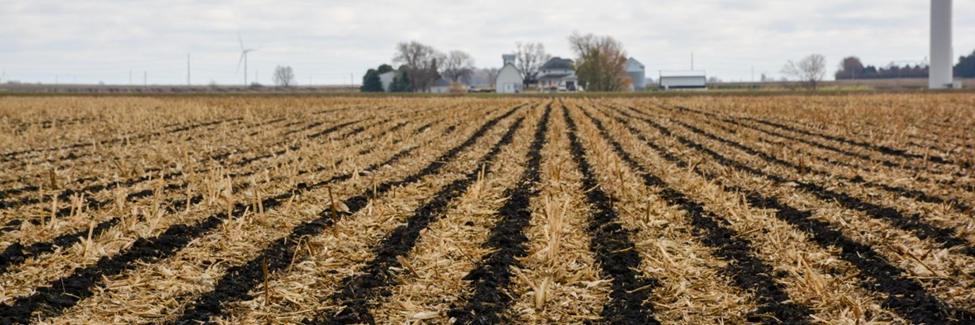
Figure 5. Fall strip-tilling leaves crop residue on the surface to protect soil (USDA-NRCS photo).
Central Plains
Phil Poppe’s cover crop wins
Phil Poppe, a Cargill RegenConnect farmer from southern Nebraska, navigated unique conditions this past year. The spring of 2024 brought abundant rainfall, saturating soils and replacing years of drought. For many, the rain was a relief, but it also presented new challenges.
Saturated soils early in the season delayed herbicide applications and complicated planting. Phil, who has been no-till for years, manages a diverse operation including corn, soybeans, wheat, and milo. He incorporates cover crops to build organic matter and improve soil health. His strategies include a rye cover crop and a longer-term mix he grazes during winter, consisting of sun hemp, mung beans, sorghum-sudangrass or millet, tillage radishes, and okra.
The 2024 season tested Phil's practices when the wet spring and dry summer raised concerns about moisture depletion. However, the cover crops preserved moisture by slowing evapotranspiration and reducing runoff. Rolling his rye cover crop allowed him to skip a herbicide pass, saving time and resources. Phil credits his cover crops with playing a pivotal role in his operation and is optimistic about reducing herbicide and synthetic fertilizer use by 50%. He remains a strong advocate for regenerative agriculture and the role cover crops play in building resilient farming systems.
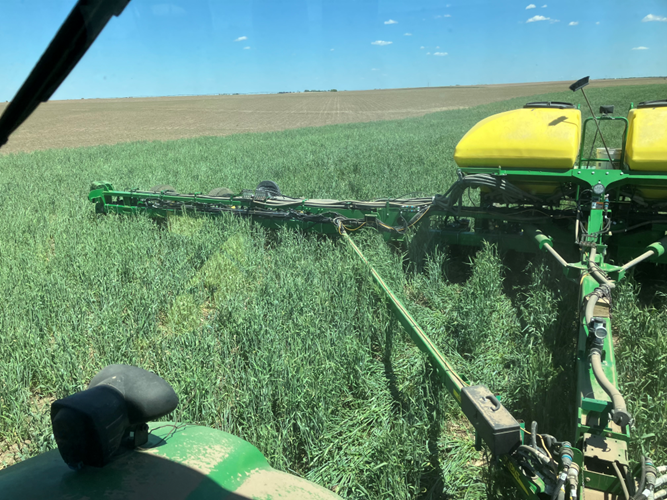
Figure 6. Planting soybeans into rye cover crop. Photo courtesy Phil Poppe, May 11, 2024.
References:
Bechman, T.J. 2024. Hurricane, Stalk Rot Take Toll on Corn. Indiana PrairieFarmer; FarmProgress. https://www.farmprogress.com/corn/hurricane-stalk-rot-take-toll-on-corn.
Lee, C., Shamim, M. 2024. 2024 Has Been a Wild Ride for Crop Farmers in Kentucky. Corn & Soybean News, Vol 6, Issue 11. University of Kentucky, November 15, 2024.
Rippey, B. 2024. Kentucky U.S. Drought Monitor: September 2024. National Drought Mitigation Center. https://droughtmonitor.unl.edu/Maps/MapArchive.aspx.
